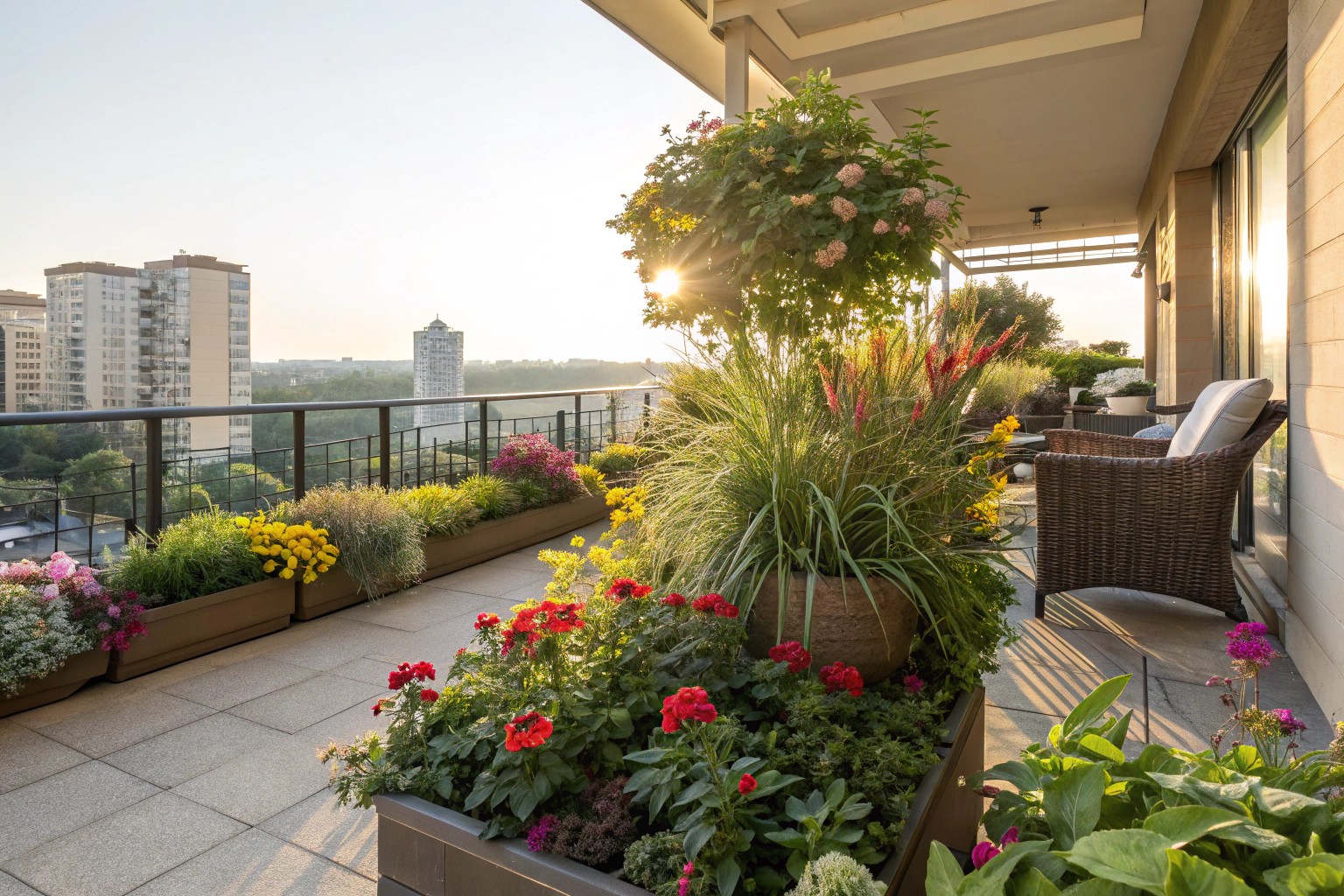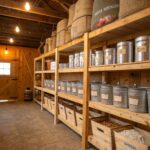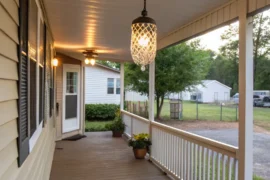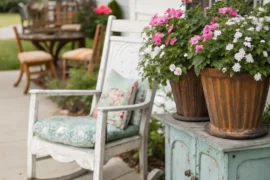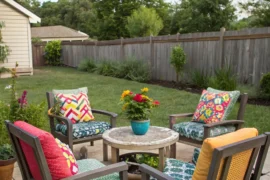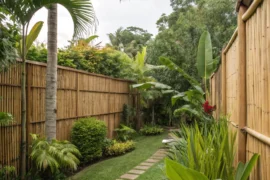For those who relocate frequently, maintaining a connection with nature can feel challenging. Portable gardens offer the perfect solution, allowing you to nurture your green thumb without leaving beloved plants behind. After working with clients from urban apartments to military families, I’ve seen firsthand how mobile gardening transforms the relocation experience while providing the therapeutic benefits we all crave.
Understanding the Portable Garden Concept
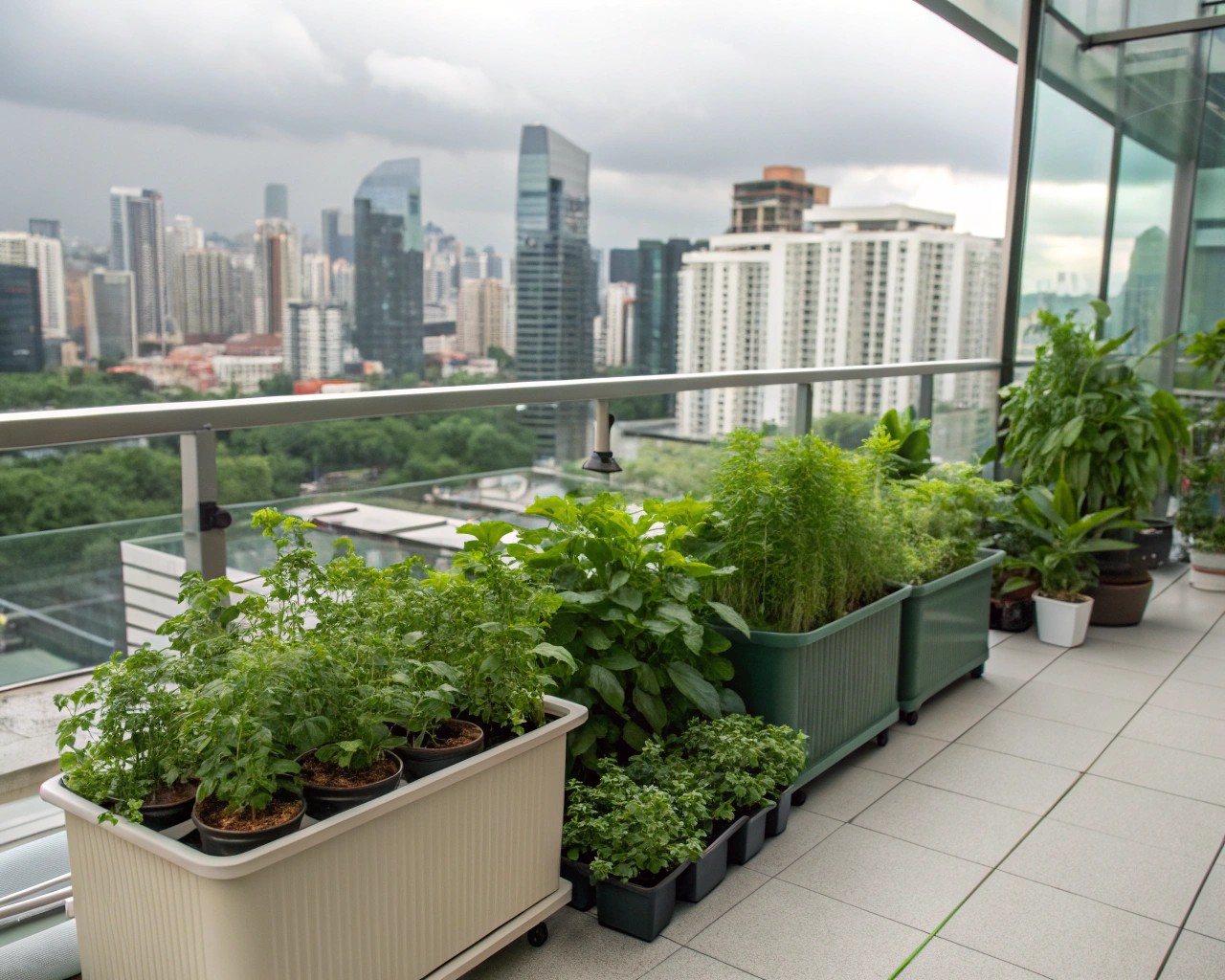
Portable gardens are adaptable green spaces specifically designed for mobility. Unlike traditional gardens planted directly in the ground, these versatile solutions utilize containers and other movable elements that travel easily from one location to another.
Experts like Ryan Harden of The Harden Garden emphasize that these are essentially adaptable green spaces conceived for movement. Prioritizing convenience over fixed planting beds ensures that relocation is hassle-free. This concept challenges the traditional notion that gardening requires permanent space, making it accessible to those with transient lifestyles.
The benefits extend beyond mere convenience:
- Maintain your connection to nature regardless of location
- Create continuity and a sense of home during transitions
- Enable gardening in urban or apartment settings
- Provide flexibility to adapt to different spaces and conditions
- Eliminate the heartbreak of leaving established gardens behind
In my design practice, I’ve observed that maintaining this green connection during transitions significantly eases the emotional stress of relocation. As one client told me, “Having my herb garden move with me made my new apartment feel like home from day one.”
Types of Portable Garden Solutions
Container Gardening
Container gardening forms the foundation of most portable garden systems. This approach involves growing plants in pots or other vessels instead of directly in the ground.
This method is particularly well-suited for those with limited space, allowing the cultivation of a diverse range of plants—including herbs, vegetables, flowers, and even small fruit trees—within the confines of balconies, patios, or small yards.
Vertical Garden Solutions
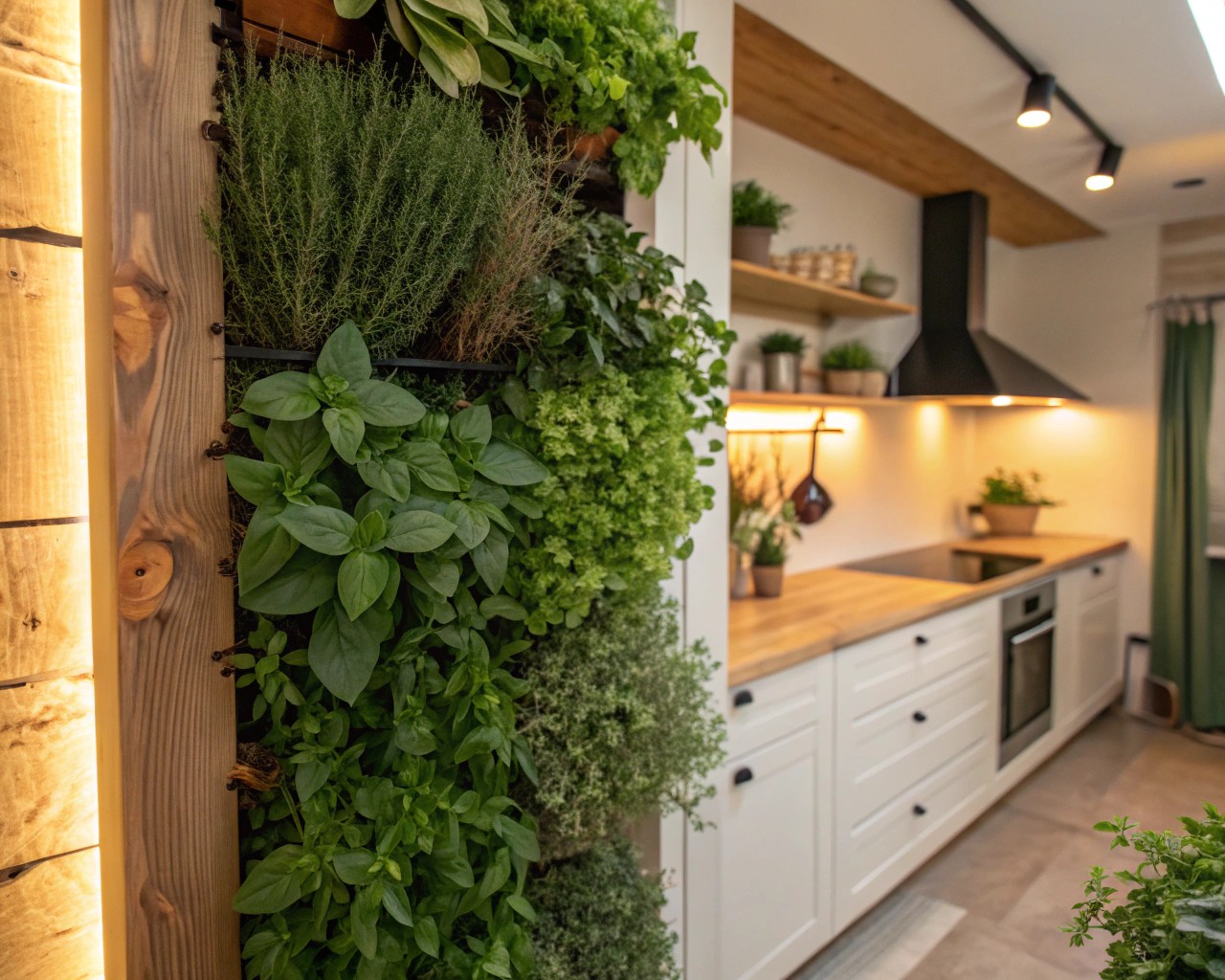
For those with extremely limited floor space, vertical gardening maximizes your growing area by utilizing walls, fences, or trellises.
This technique effectively transforms unused vertical surfaces into productive and beautiful green spaces. Using supports for climbing plants like beans or cucumbers can create lush living walls that provide fresh produce while enhancing the surroundings’ aesthetics.
Innovative Container Options
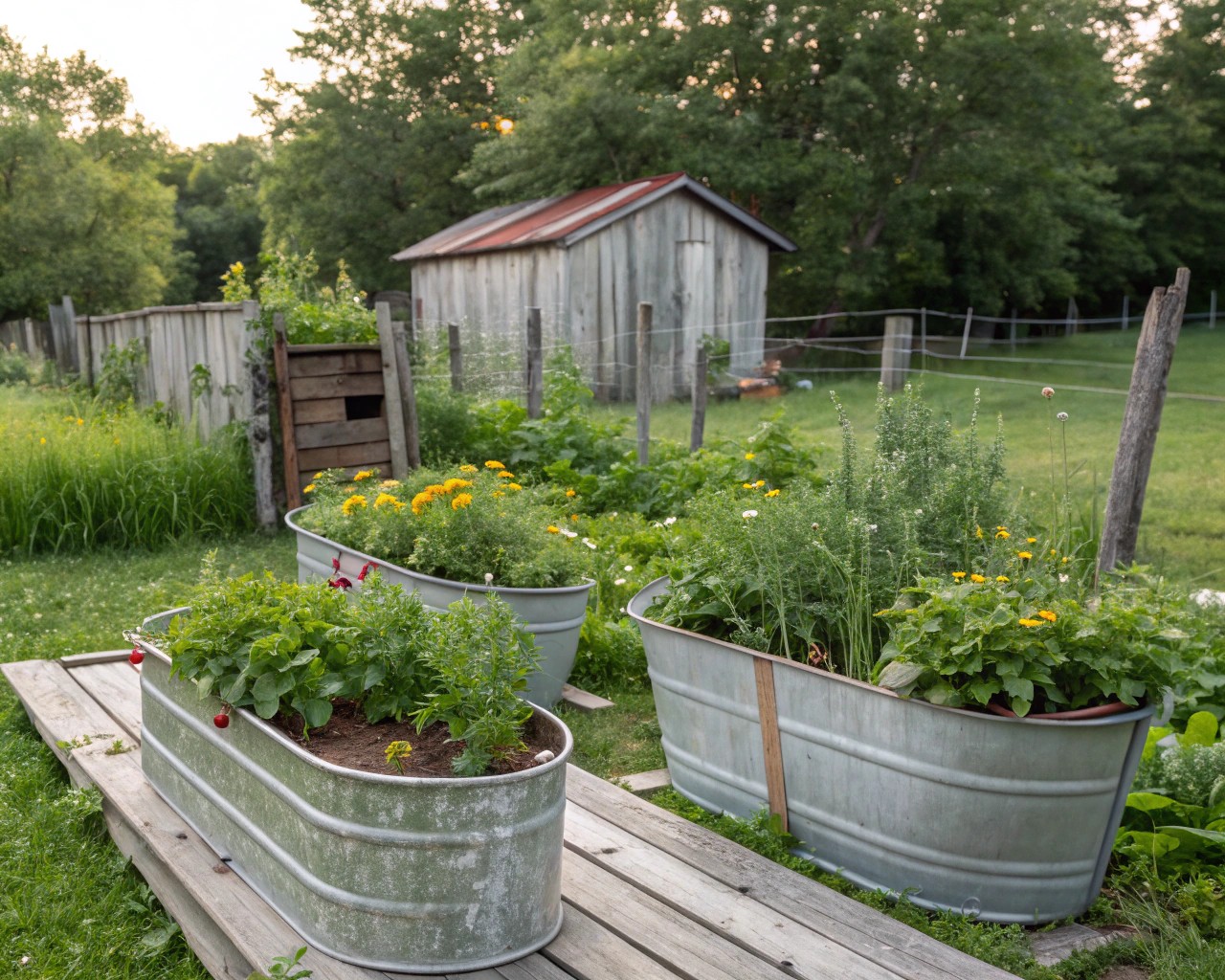
Beyond traditional pots, creative solutions abound. Some of the most successful portable gardens I’ve designed have incorporated:
- Wheelbarrows and wagons with sturdy wheels
- Food-grade buckets with drainage holes added
- Galvanized metal tubs with custom-added drainage
- Wooden crates lined with pond liner
- Upcycled suitcases (waterproofed and modified)
- Recycled shopping carts for urban settings
Selecting the Right Plants for Your Portable Garden
Plant selection dramatically impacts the success of your portable garden. Choose wisely with these guidelines:
Hardy Varieties for Resilience
Starting with hardy varieties is often recommended, as these resilient species adapt better to various conditions, ensuring your green space thrives despite potential moves. After helping dozens of clients establish movable gardens, I’ve found that plants with flexible growing requirements handle the stress of relocation much better.
Size Considerations
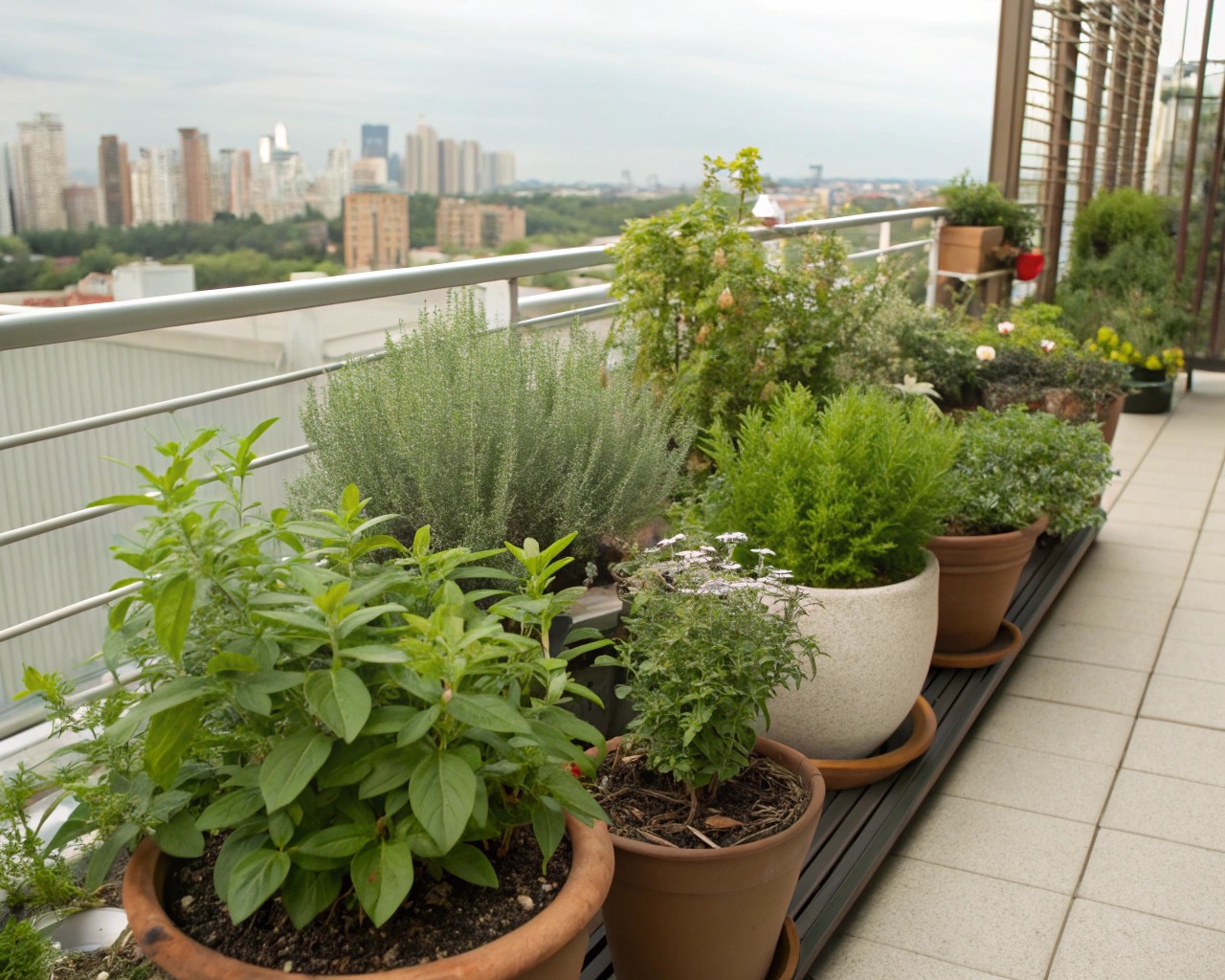
When selecting plants, consider their mature size relative to your containers. It’s important to match plant size to pot size; small herbs like mint or basil fit easily, while medium-sized shrubs can add visual interest if space permits.
Top Plants for Portable Gardens
Based on my experience and client success stories, these plants consistently perform well in mobile gardens:
| Plant Type | Examples | Container Size | Special Considerations |
|---|---|---|---|
| Herbs | Basil, mint, thyme, rosemary | Small to medium | Most herbs prefer well-draining soil |
| Vegetables | Cherry tomatoes, lettuce, peppers | Medium to large | Most need 6+ hours of sunlight |
| Succulents | Echeveria, aloe, jade plant | Small to medium | Require excellent drainage |
| Ornamentals | Snake plant, ZZ plant, pothos | Small to large | Many tolerate low light |
| Dwarf Trees | Citrus, fig, Japanese maple | Large containers | Need winter protection in cold climates |
Succulents are frequently highlighted for their adaptability. For reliable beauty and hardiness, the snake plant is an excellent choice, while lavender adds delightful fragrance to any portable garden setup.
Container Selection Guide
The right containers make all the difference in portable garden success. I’ve learned through trial and error that mobility, durability, and adequate size are the three critical factors.
Materials Comparison
| Material | Weight | Durability | Cost | Best For |
|---|---|---|---|---|
| Plastic | Light | Medium | Low | Most plants, easy mobility |
| Ceramic | Heavy | Medium | Medium-High | Ornamentals, stability |
| Wood | Medium | Medium (if treated) | Medium | Aesthetic appeal, insulation |
| Metal | Medium | High | Medium-High | Durability, industrial style |
| Fabric | Very Light | Low-Medium | Low | Herbs, annuals, easy storage |
Size Guidelines
Generously sized pots allow plants ample time to grow before needing repotting and help retain moisture longer. As experienced gardeners often advise, “Use nice big pots so that plants take time to outgrow the space whilst they are big enough to retain water.” I’ve found that undersized containers are the number one reason for portable garden failure.
Mobility Features
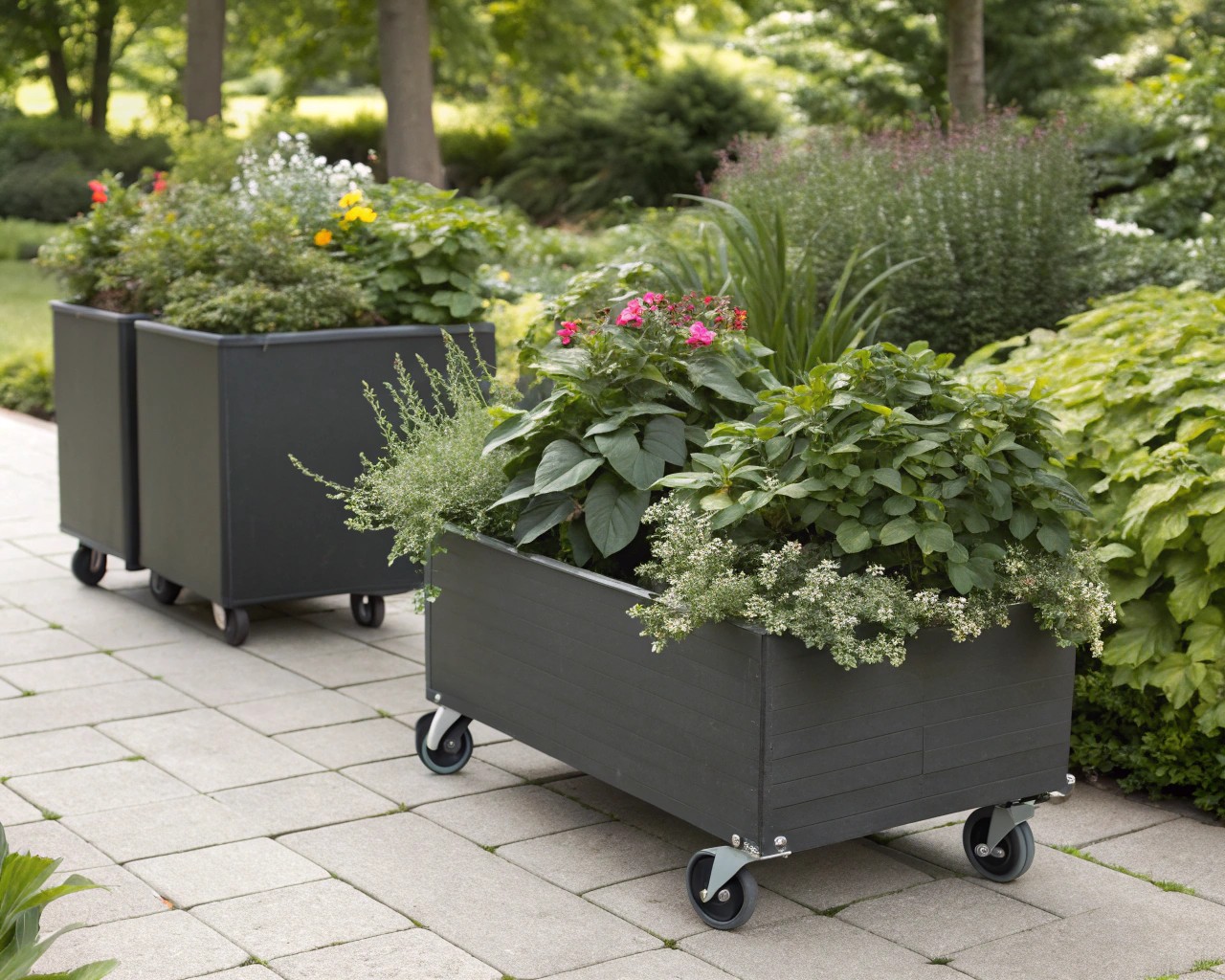
For true portability, consider:
- Heavy-duty casters: Remember that containers filled with damp soil and plants are extremely heavy, so “Be sure to use heavy-duty casters, as movable containers are very heavy when they’re filled with plants and damp potting mix.”
- Built-in handles for smaller containers
- Lightweight materials for frequently moved plants
- Nesting designs for storage during moves
Setting Up Your Portable Garden: A Step-by-Step Guide
1. Choose the Right Containers
Select containers that are easily movable and appropriate for the types of plants you intend to grow. When working with clients in temporary housing, we always discuss how frequently they’ll need to move the garden before finalizing container choices.
2. Ensure Proper Drainage
Proper drainage is non-negotiable for container gardening, especially for those on wheels. Without holes in the bottom for excess water to escape, plant roots can quickly rot. If using containers not originally designed for plants, you’ll need to add drainage holes—this is one of the most critical steps I emphasize with new gardeners.
3. Select Appropriate Growing Medium
Use a high-quality potting mix designed for containers. Garden soil is generally too dense, compacts easily, and doesn’t allow for proper aeration or drainage in pots. Lightweight potting mixes are preferred for better root health.
4. Plant Selection and Arrangement
Choose plants known to thrive in containers, such as herbs, many vegetables, ornamentals, and dwarf fruit trees. Arrange them thoughtfully, often placing taller plants in the back or center, depending on the primary viewing angle.
5. Establish a Maintenance Routine
Create a regular schedule for essential care, including watering, pruning, fertilizing, and checking for pests or diseases. Keep in mind that mobile gardens often require more frequent watering than traditional in-ground plantings.
Design Strategies for Impactful Portable Gardens
Creating a cohesive, beautiful portable garden requires thoughtful design. Over the years, I’ve refined several approaches that work particularly well for movable plantings:
Grouping for Impact
Thinking creatively about arrangement is key. Grouping pots together, perhaps using simple wooden blocks or stands to elevate some containers, creates varying heights and adds significant visual interest, making the collection feel like a more substantial, established garden.
Flexible Arrangements
A major advantage of portable gardens is their adaptability. The ability to move pots and containers around allows you to experiment with placement, observe how different plants respond to various locations, and easily refresh the garden’s look throughout the seasons.
Real-Life Success Stories
Urban Balcony Transformation
I recall working with a client in New York City who had a tiny balcony but desperately wanted fresh tomatoes and herbs. We set up a few five-gallon buckets, ensuring proper drainage by drilling holes and adding gravel, then filled them with a mix of garden soil and compost. We planted cherry tomatoes and basil, and within weeks, she had thriving plants and was thrilled to be harvesting produce right off her balcony—something she hadn’t realized was possible.
Portable Privacy Solution
One of my favorite projects involved creating privacy for a client’s rental patio. We designed a series of large rectangular planters on hidden casters planted with tall ornamental grasses and narrow bamboo varieties. When they moved two years later, the entire privacy screen relocated easily to their new backyard, where it now elegantly defines an outdoor dining area.
Community Impact
The beauty of portable gardening extends beyond individual homes, fostering community connections as well. For instance, “A community garden in Brunswick, Maine, in the middle of some senior projects drew in Boy Scouts, Bowdoin College professors, and seniors… The Scouts built a solar irrigation system out of spare parts that looked like something from NASA. It was incredible.”
Overcoming Common Challenges
Challenge: Maintaining Moisture in Containers
Containers dry out more quickly than in-ground gardens. To combat this, consider installing simple drip irrigation systems with timers for consistent moisture, or explore self-watering containers that feature built-in reservoirs.
Challenge: Temperature Fluctuations
While container gardening simplifies tasks like weeding and pest control, plant roots are more exposed to temperature extremes. In cold climates, group containers together and add insulation (like burlap wraps or mulch) during winter. In hot regions, elevate pots off scorching surfaces like pavement to prevent root overheating.
Challenge: Moving Day Logistics
Plan ahead for transporting plants during moves. I recommend:
- Watering thoroughly 24 hours before moving
- Placing small pots in boxes with dividers
- Adding temporary plastic coverings to prevent soil spillage
- Moving plants in an enclosed vehicle when possible
- Making plants the last items loaded and first unloaded
Seasonal Maintenance Calendar for Mobile Gardens
| Season | Tasks | Special Considerations |
|---|---|---|
| Spring | Repot as needed, start fertilizing, introduce new plants | Perfect time to assess winter damage |
| Summer | Consistent watering, pinch back for bushier growth | Move shade-loving plants out of intense afternoon sun |
| Fall | Reduce fertilization, prepare tender plants for winter | Consider bringing tropical plants indoors |
| Winter | Minimal watering, protect from freezing, plan for spring | Group containers for insulation in cold climates |

